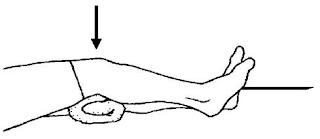Whenever it is about pain, everyone
would have their own suggestions. Whether to use hot packs or to use cold pack
or to apply turmeric powder on that and so on. There is so much confusion about
this. These both are the easiest, cheapest, and safest self-treatment options
for management of many common pain problems.
When to use ice pack?
Icing is used mainly when your
injury is fresh. Acute injury would cause swelling, redness and increased
temperature locally. Icing would grossly help you out in reducing the swelling
and this reduction in swelling would decrease the pain.
When not to use ice pack?
It can cause temporary harm when it
is used poorly. Do not use ice when you have stiffness or tightness. Don’t use
it when already you are shivering. During such period, if you apply ice, the
brain will get the wrong signals and will aggravate the pain.
Caution: never use ice in case of lower back pain or cervical pain (Neck
pain). It might aggravate the symptoms.
When to use hot pack?
Heat is generally used for muscular
chronic pain, stiffness, tightness. These symptoms would be of unclear cause,
but there might be some trigger points which can be relieved by applying heat
over it. Most of the time in patients with back pain would feel decrease in
pain after heating, because there would be release in its trigger points and in
tightness too.
When not to use hot pack?
Heat should not be used when you
have acute injury. Acute injury causes swelling and inflammation. Applying heat
would worsen the swelling and so increases the pain. Avoid it when already you
are sweating.
How about combining it?
Alternating between hot and cold is
called “Contrast Bath”. It is very stimulating and could be helpful in
recovering from injury with unknown efficacy.
Take Home message
Both have equal potency. As they
are available easily and the safest amongst all other treatments, people use it
very often. They are for temporary purpose. You can choose whatever makes you
feel good! It is going to be dependent totally on your consideration.











